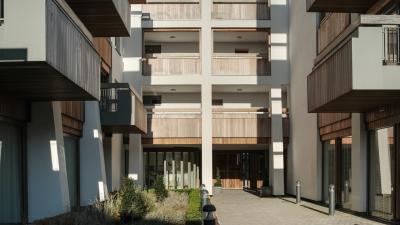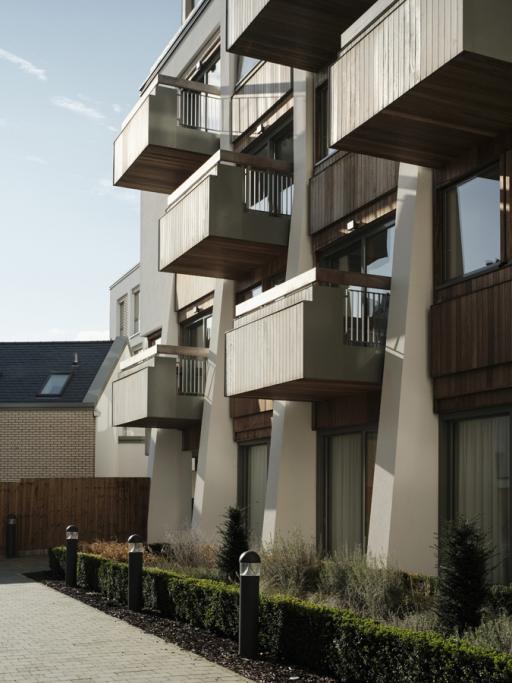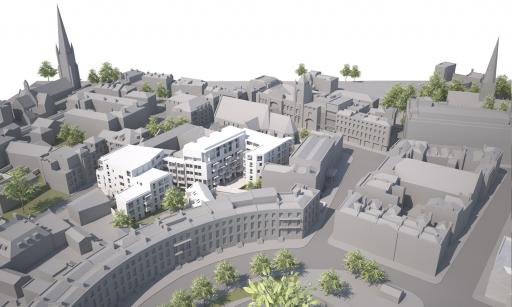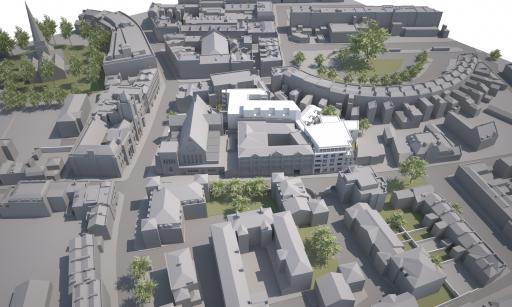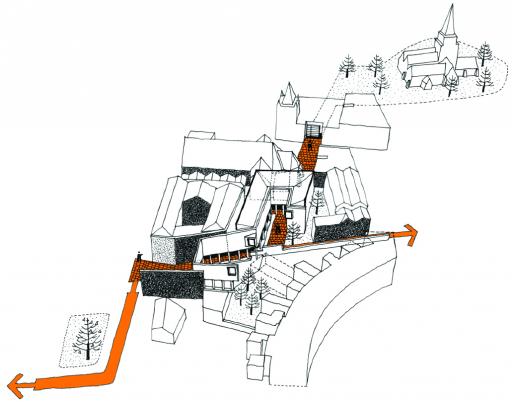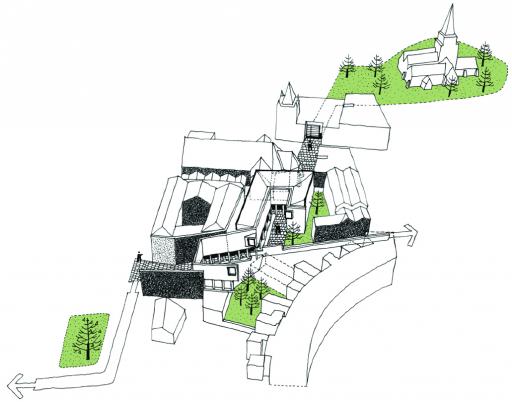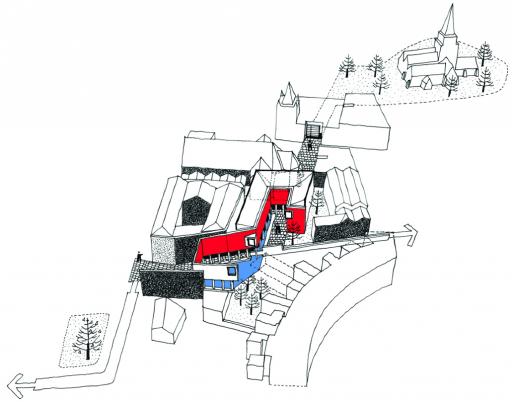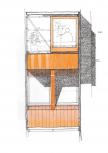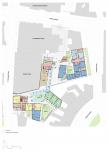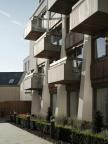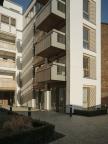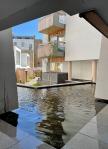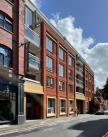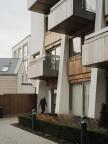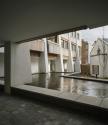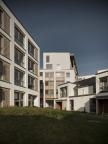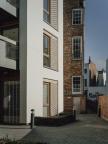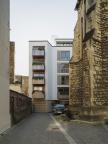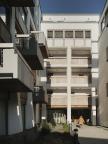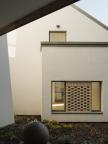Latheram House is a later living residential development, carefully integrated into Cheltenham’s central conservation area. Inspired by the town’s historic courtyards and cloisters, the project opens up a new public thoroughfare, connecting it to the town centre via a sequence of theatrical hidden spaces, for residents and the public.
The development sits alongside the refurbished Grade II listed, John Dower House, the town’s original, early-19th Century spa guest house, with the new buildings (hidden mid urban block), delivering 68 later living dwellings. These define a series of new landscaped courtyards, and a central tranquil reflecting pool.
The scheme is designed to facilitate independent, retirement living, while reimagining a previously disused and hidden part of Cheltenham’s townscape. It delivers an environment where residents can enjoy the freedom, sanctuary and retreat of home, while benefitting from uplifting and welcoming social and public spaces.
The new, six-storey buildings are carefully configured to respond to the scale and form of the original historic structure, while maximising a southerly aspect for the new apartments. The accommodation, which ranges from one to three-bedroom apartments, is flexible, with generous internal layouts, large windows to every room and animated views to the outside. The staggered arrangement of projecting balconies, overlooking the central courtyard is designed to encourage interaction between neighbours and visual engagement with the new public route and pedestrians below.
Communal spaces including the ground floor common room, and guest suite, as well as the courtyard and garden areas, are designed to create opportunities for social interaction, and to nurture a close-knit community.
The material palette borrows from the differing urban characters of the surrounding conservation area and the town’s existing historic courts. The St George’s Place façade consists of a dominant palette of red brick, complemented by white render and white perforated brick panels, inspired by the white and cream stucco of the immediately adjacent Grade II* listed Royal Crescent. Balconies and ground level cloisters are timber clad bringing a visual warmth to the surfaces encountered by residents and the public alike.
"We moved into Latheram House in August 2021 and have very much enjoyed living here. Not just because we are in a well-designed modern apartment with beautiful views but also because we are right in the middle of Cheltenham. Despite that the development is a surprisingly peaceful place with gardens, grass and trees. We can wave to fellow residents on their balconies and meet up with them in the beautiful lounge area. We also encounter them in the courtyards making our way to one or other of the three gateways." Judie Hodson, Latheram House resident
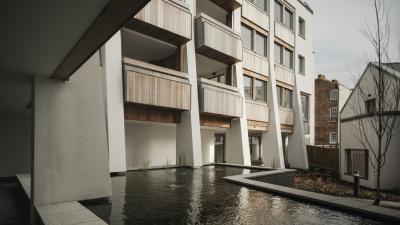
The development adopts a number of contextual design strategies that integrate the buildings into their sensitive surroundings whilst contributing to the regeneration of this city centre location. The newly created public pedestrian route through the site creates a connection between two prominent streets, St. George’s Place and Clarence Street, before leading to the adjacent Wilson art gallery and on to the tranquil landscape surrounding St. Mary’s Church. The pedestrian sequence is visually punctuated by a series of green garden spaces within the heart of the development, acting as a tranquil space to discover within the centre of Cheltenham, and helping to open up, and improve permeability across this town quarter.
The courtyard at the centre of the scheme is reminiscent in scale to the galleried inn courtyards of the 15th and 16th Centuries. The space provides a visual focus to the apartments, and a gathering place, enclosed by planted borders, green fringes and a reflecting pool all featuring places to sit and relax.
